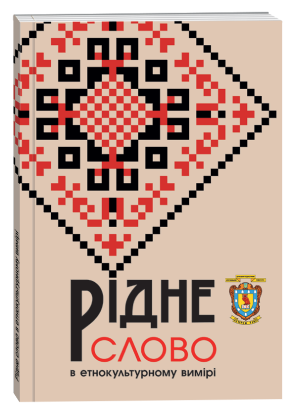UKRAINIAN ANTHROPONYMS OF THE 17TH CENTURY IN A LITTLE-KNOWN TURKISH HISTORICAL SOURCE. IX.
DOI:
https://doi.org/10.24919/2518-1602.2024.9.7Keywords:
anthroponymy, borrowed names, creative stem, proper names of people, «Defter Mufassal (ca. 1681)».Abstract
The article is intended to study Ukrainian anthroponyms of the 17th century, which are recorded in the little-known Turkish historical source “Defter Mufassal of 1681”. The proper names of people within М – Mavrunejko have been investigated into. The objective of the article is to analyze the proper names recorded in “Defter Mufassal of 1681”. To achieve the objective, the following tasks are defined: 1) to separate Ukrainian anthroponyms of the 17th century in the little-known Turkish historical source “Defter Mufassal of 1681”; 2) to analyze the proper names of people and compare them with the modern Ukrainian anthroponymicon; 3) to identify those onyms that are not recorded at the present stage. Ancient anthroponyms, extracted from a historical source, are an additional source of the anthroponymicon, which functioned in the territory of Ukraine in the 17th century. The proper names of the people entered into “Defter Mufassal of 1681” testify to the antiquity of such onymic formations, the adaptation of borrowed names on Ukrainian-language grounds. Summarizing the above, one can say that of the 91 names within М – Mavrunejko there are those that: are common today at the level of proper names of people and surnames; have differences with modern equivalents at the phonetic level; are not detected at the present stage, but they can be found in derived names. The practical value of the article is that the discovered and analyzed proper names of people supplemented the All-Slavic anthroponymicon. As a result of the investigation, the peculiarities of anthroponyms isolated from the Turkish monument “Defter Mufassal of 1681” have been established. In particular, this historical source testifies to the functioning of family names in Ukraine in the late 17th century. The represented list of anthroponyms within М – Mavrunejko confirms that there was an extensive register of borrowed proper names, which were adapted on the Ukrainian language basis; a wide range of suffixes with the help of which derived names/ family names were created have been established.
References
Карта поширення прізвищ України. Рідні. Генеалогічне товариство. URL: https://ridni.org/karta.
ПОКАЖЧИКИ ДО НОВГОРОДСЬКОГО ПЕРШОГО ЛІТОПИСУ. ІЗБОРНИК. URL: http://litopys.org.ua/novglet/novgdod04.htm.
Редько, Ю. (2007). Словник сучасних українських прізвищ у 2 т. Львів: НТШ, Т. 1.
Редько, Ю. К. (2023). Сучасні українські прізвища (походження, словотвір, поширення). Львів. 552 с.
Словник прізвищ: практичний словозмінно-орфографічний (на матеріалі Чернівеччини). Чернівці: Букрек.2002.
Словарь української мови : у 4 т. / зібр. ред. журн. «Киевская Старина»; упор. з додатком власного матеріалу Б. Грінченко. К., 1907. Т. 1. 494 с.; 1907. Т. 2. 573 с.; 1907. Т. 3. 506 с.; 1907. Т. 4. 563 с.
Трійняк, І.І. (2005). Словник українських імен. Київ: Довіра.
Internet Archive. Wayback Machine. URL: https://web.archive.org/web/20230309213956.
Kołodziejczyk, D. (2004). The Ottoman Survey Register of Podolia (ca. 1681). Defter-i Mufassal-i Eyalet-i
Kamaniçe. Part I: Text, Translation, and Commentary. Kyiv – Cambridge, Massachusetts: Harvard University Press for the Harvard Ukrainian Research Institute.
Türk Dil Kurumu Sözlükleri. URL: https://sozluk.gov.tr/.







